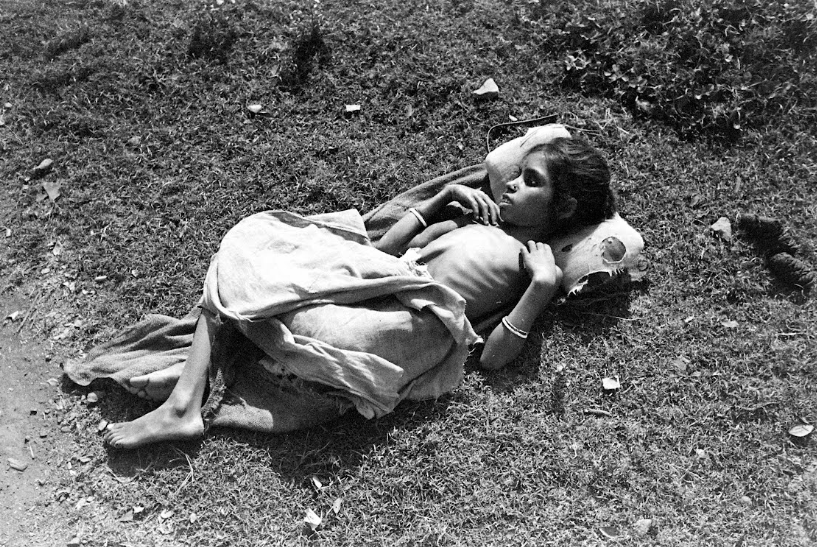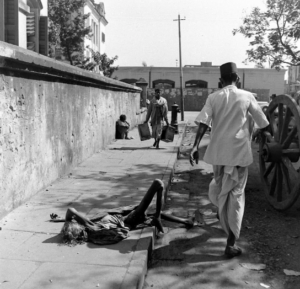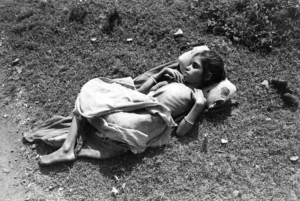Bengal Famine of 1943
The Great Bengal Famine of 1943: A Scar on History
The Great Bengal Famine of 1943, also known as the Bengal Famine, remains one of the deadliest famines in human history. An estimated 3 million people perished during this horrific event, leaving an indelible mark on the region and sparking ongoing debates about its causes and the role of the British Raj.
British Raj and the Bengal Famine
The Bengal region, encompassing present-day Bangladesh and West Bengal in India, fell under British rule in the 18th century. While British policies aimed to increase agricultural production for export, they often placed the needs of the colonial economy above those of the local population. This exploitative system played a significant role in the unfolding tragedy.
Causes of the Bengal Famine of 1943
While natural disasters like cyclones and rice blight contributed to food shortages, the Bengal Famine wasn’t solely caused by a lack of rice. Several factors exacerbated the crisis:
- Wartime Priorities: World War II was raging, and the British government prioritized stockpiling rice for the war effort. Rice exports from Bengal continued despite dwindling local supplies.
- Procurement Policies: The British government’s rice procurement policies forced farmers to sell their crops at artificially low prices, discouraging production and depleting local stocks.
- Inflation and Speculation: Wartime inflation led to hoarding and speculation by wealthy individuals and businesses, further driving up rice prices and making it unaffordable for the poor.
- Breakdown of Transportation: Japanese advances during the war disrupted transportation networks, making it difficult to move available rice within Bengal to areas facing severe shortages.
These factors combined to create a perfect storm, leaving millions vulnerable to starvation.
Bengal Famine Death Toll
The exact death toll of the Bengal Famine is still debated, with estimates ranging from 2.1 million to 3.8 million people. The vast majority of victims were Bengali farmers, agricultural laborers, and their families, who could no longer afford basic necessities. Many died from starvation, while others succumbed to diseases like malaria and dysentery, weakened by malnutrition.
Impacts of the Bengal Famine
The Bengal Famine’s impact was widespread and long-lasting:
- Social Disruption: The famine caused widespread social disruption, with families torn apart and communities devastated. The trauma of the experience continued to affect generations.
- Economic Decline: The loss of life and destruction of livelihoods set back Bengal’s economy for decades.
- Legacy of Hunger: The Bengal Famine exposed the vulnerabilities of the colonial economic system and continues to be a stark reminder of the human cost of prioritizing profit over people’s basic needs.
-
Long-Term Impacts of the Bengal Famine of 1943
The Bengal Famine of 1943 wasn’t just a horrific event that claimed millions of lives. It left deep scars on the region, impacting not just the immediate aftermath but also shaping the social, economic, and demographic landscape for decades to come. Here’s a closer look at some of the long-term consequences of this devastating famine:
1. Demographic Shift:
- Loss of Life: The estimated death toll of 2.1 to 3.8 million people significantly altered Bengal’s population structure. The loss of a large young and middle-aged population had a ripple effect on future generations.
- Gender Imbalance: The famine disproportionately affected men, who were more likely to migrate for work in search of food. This resulted in a skewed gender ratio, with a surplus of women further impacting social dynamics.
2. Social Disruption:
- Breakdown of Family Structures: Millions lost family members, leading to orphaned children and broken homes. This created social instability and increased vulnerability, especially for women and children.
- Psychological Trauma: The experience of starvation and witnessing death left lasting psychological scars on survivors and future generations.
3. Economic Devastation:
- Loss of Livelihood: The death of farmers and agricultural laborers crippled agricultural production. This, combined with the disruption of markets and infrastructure, severely impacted Bengal’s economy.
- Debt and Poverty: Many survivors were burdened with debt incurred during the famine to buy food. This cycle of poverty hampered economic recovery for years to come.
4. Public Health Issues:
- Disease Outbreaks: Malnutrition and weakened immune systems led to outbreaks of diseases like malaria, cholera, and dysentery. These epidemics further exacerbated the death toll.
- Long-Term Health Effects: Survivors who endured starvation often faced long-term health problems like stunted growth, weakened immune systems, and cognitive impairments.
5. Political and Social Unrest:
- Anger at British Policies: The public outrage over the British government’s handling of the famine fueled nationalist sentiments and contributed to the growing independence movement in India.
- Social Tensions: Competition for scarce resources and the struggle to rebuild lives led to social tensions and unrest in some regions.
The Great Bengal Famine serves as a tragic reminder of the devastating consequences of war, colonial exploitation, and misguided policies. Understanding its causes and impacts is crucial to ensure such a tragedy never befalls any region again.


